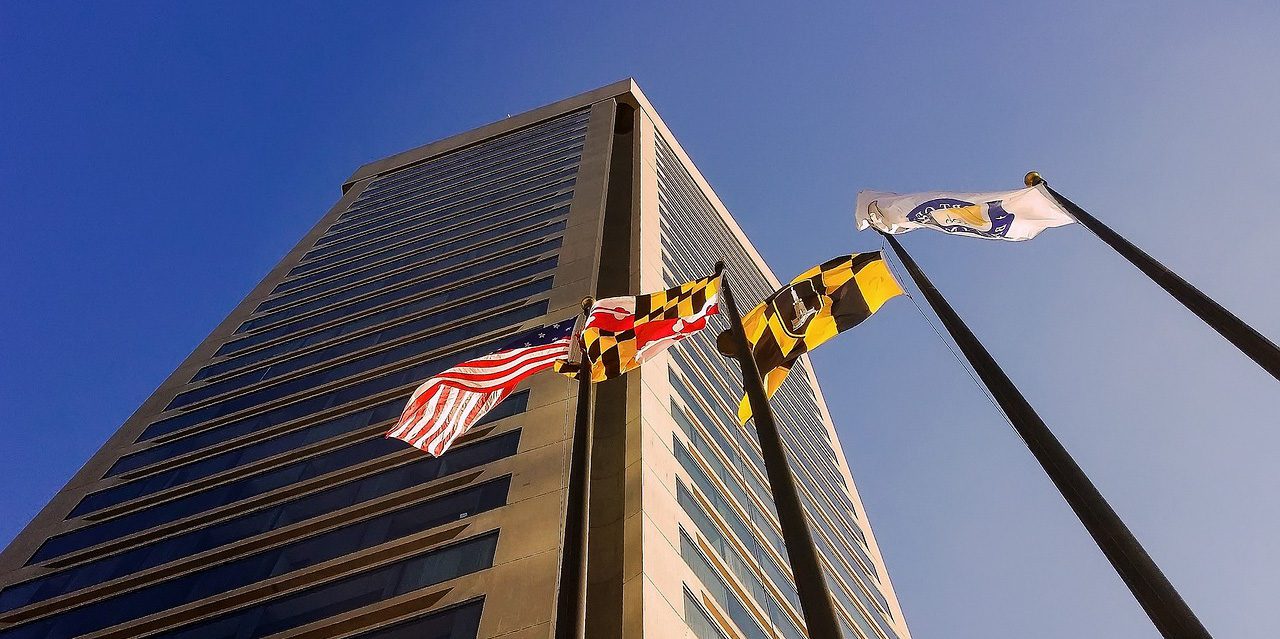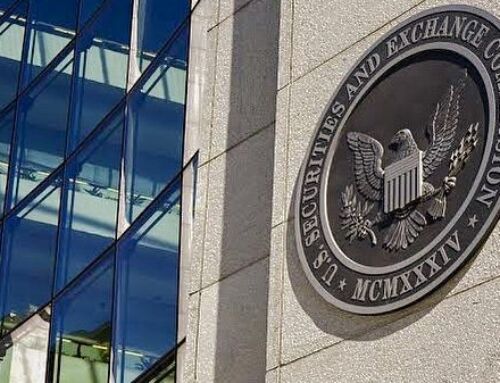View by Topic
Recent Articles
-
Congress Blocks California’s Gasoline Car BanSaturday, May 31st, 2025
-
EPA Will Keep Current Limits for “Forever Chemicals” in Drinking WaterSaturday, May 24th, 2025
-
Court Indefinitely Pauses SEC Climate Rule LitigationSaturday, May 17th, 2025
-
Maryland is About to Regulate Mold But is the Cart Before the HorseSaturday, May 10th, 2025
View by Month/Year
“Green Building Law Update” Headlines
Recent Articles & News from
Stuart Kaplow’s blog
at GreenBuildingLawUpdate.com
- Congress Blocks California’s Gasoline Car Ban: A Legal and Policy Analysis June 1, 2025
- EPA Will Keep Current Limits for “Forever Chemicals” in Drinking Water May 25, 2025
- Court Indefinitely Pauses SEC Climate Rule Litigation May 18, 2025
- Maryland is About to Regulate Mold: But is the Cart Before the Horse? May 11, 2025
Subscribe to the Green Building Law Update!
Stuart Kaplow brings his expertise and extensive experience to the table with his unique digital publication, "Green Building Law Update". Subscribers receive regular updates to keep them informed about important issues surrounding Environmental Law, Green Building & Real Estate Law, as well as the emerging demand for Environmental Social Governance (ESG).
Get fresh content through the lense of Stuart Kaplow's cutting-edge expertise, innovative commentary and insider perspective. Don't miss another issue! Subscribe below.

Greenhouse Gas Data Must be Collected Beginning January 1 in Maryland
On January 29, 2024, after this article was posted, the Maryland legislature’s Joint Committee on Administrative, Executive, and Legislative Review (AELR) put a “hold” on the proposed regulations to create the Maryland Building Energy Performance Standards (BEPS) as required by the Climate Solutions Now Act of 2022.
The regulations require covered building owners to measure and report data to the Maryland Department of the Environment. The regulation further requires that covered building owners reduce net direct GHG emissions and energy use intensity (EUI) measurements.
The regulations were published in the December 15, 2023 issue of the Maryland Register.
The primary function of AELR is to review proposed regulations to determine whether they conform to the statutory authority of the unit and the legislative intent of the statute under which the regulations are proposed. The hold letter as transmitted from the AELR to the Maryland Governor and MDE provided the committee wanted to look into the economic impact the regulations may have.
The hold is effective for renewing 30 day periods until released by AELR. There is an alternative for an override by the Governor. We will post here when more information is available.
This post is adapted from a Client Alert to commercial real estate owners and tenants in those buildings in Maryland about the new regulations requiring that beginning January 1, 2024 greenhouse gas emission data be collected for reporting to the state government.
The Maryland Department of the Environment has given notice to the legislature that it intends to publish new regulations on December 15, 2023, to create Maryland Building Energy Performance Standards (BEPS) implementing the Climate Solutions Now Act of 2022.
The stated goal of that Act is to reduce net direct greenhouse gas emissions from Maryland’s building sector for certain buildings that are 35,000 square feet or larger. The regulation requires covered building owners to measure and report net direct GHG emissions (kg/CO2e/sq ft) data to MDE. The regulation further requires that covered building owners not only meet specific net direct GHG emissions but also energy use intensity (EUI) standards (kBtu/sq ft). This regulation of EUI is not only not authorized by the statute, but MDE staffers argue the government should regulate not only GHG emissions but also how much energy is used by a building ignoring that such a regulatory scheme over energy is constitutionally barred as preempted by the federal Energy Policy and Conservation Act.
The 2022 Act sets the big, hairy, audacious goal of dramatically reducing statewide GHG emissions by 60% below 2006 levels by 2031, arguably the strictest state standard in the nation (i.e., Michigan, Connecticut, New York, and Oregon all have GHG mandates but nothing like Maryland) and achieve net zero emissions by 2045. Among the requirements in that statute is that Maryland implements BEPS mandating covered buildings achieve a 20% reduction in net direct GHG emissions on or before January 1, 2030, as compared with 2025 levels for average buildings of similar construction; and, ultimately attain net zero direct GHG emissions on or before January 1, 2040 (.. although disproportionately burdening privately owned buildings by exempting nearly all government buildings, including schools from the law). For broader context see our blog post from last year, Maryland is the First State to Regulate Carbon.
To accomplish that, MDE has given notice of its intention to publish new regulations which have been described by a Maryland business owner as looking like a misguided kamikaze run. Specifically, those new rules provide:
“Each calendar year beginning in 2025 or in the first calendar year after which a newly constructed covered building is occupied, the building owner shall collect and enter all required benchmarking information for the previous calendar year into the benchmarking tool.” The regulations mandate that buildings will be required to benchmark energy use utilizing the United States Environmental Protection Agency’s ENERGY STAR Portfolio Manager tool. The debate over the efficacy of using Portfolio Manager for a purpose it was not created for, is left for another day, however, we are already doing Portfolio Manager calculations of buildings for our clients. Of import beyond the actual proposed regulations, there is a draft TM 23-01 Technical Guidance and Calculations Methodologies document that prescribes how some of this is to be done.
A building owner is required to submit an ENERGY STAR Portfolio Manager report to MDE by June 1st of each year, beginning in 2025. The information required to be inputted into Portfolio Manager is not only energy meter data, but for offices also weekly operating hours, number of workers on main shift, number of computers, percent that can be cooled, and more; all of that may vary for a building with more than one use.
Beginning in 2026 that data must be third party verified and not only have we already been assisting building owners in collecting the required data, we will also be offering that third party verification service.
The building owner is to exclude from the benchmarking report submetered and separately metered energy consumption data for: Food service facilities that engage in commercial cooking and water heating; electric vehicle charging; and other electricity uses excluded from site energy use by the benchmarking tool.
Also to be excluded are emissions from required combustion equipment under the following conditions: Emissions from generators shall be excluded from the net direct emissions requirements if a federal or state regulation requires a covered building including a health care facility, laboratory, assisted living and nursing facility, military building, critical infrastructure, and a building used in life sciences that use a backup generator or other equipment that run on combustible fuels. And a covered building is required to include emissions from a combustion generator if the relevant federal or state regulation is updated to allow battery storage or other types of systems that do not produce direct emissions.
How a building owner (i.e., the person required by the law to report and ultimately reduce GHG emissions) as opposed to its tenants who are not subject to or even mentioned in the statute are going to obtain this data will no doubt be the work of attorneys. While not authorized to do so by the statute, the regulations dubiously provide, “A tenant of a covered building shall, within 30 days of a request by the building owner, provide all requested benchmarking information that cannot otherwise be acquired by the building owner from other sources.”
And there is a statement that although curious does not quite address ownership or confidentiality of the GHG data, “Nothing in this regulation shall be construed to permit a building owner to use tenant energy usage data for purposes other than evaluation of the performance of the building.”
The regulations are very specific that on and after January 1, 2025 (.. correct, not 2024), upon the request and authorization of a building owner an electric or gas company shall provide the building owner with at least the most recent 12 consecutive months of whole building energy consumption data by fuel type.
But then in the very next section, the regulations provide, “For covered buildings with five or more tenants, electric and gas companies shall deliver to requestors the monthly whole building energy consumption data capturing total consumption by fuel type of all relevant fuel(s) across all meters at the building.” Followed by the specious statement, without any authority, “The whole building energy consumption data shall not be deemed confidential information by the electric and gas companies for purposes of delivery to the building owner.”
This is followed by, “For covered buildings with fewer than five tenants, electric and gas companies shall deliver whole building energy consumption data to the building owner if the building tenants provide written or electronic consent for the delivery of the tenant’s energy data to the building owner .. The building tenant’s consent may be provided in a lease agreement provision.” But with no tenant consent the building owner who is required to report the data, and no data?
Additionally, as soon as these regulations become effective, they require also without statutory authorization, “Before a buyer signs a contract for the purchase of a covered building, the building owner selling the covered building shall: Disclose to the prospective buyer that the building is subject to requirements ..” under these regulations, including transferring a list of specific records and information to the prospective buyer, including the complete benchmarking record from the benchmarking tool, documentation of data verification, and more.
All those who have an interest in a building in Maryland, or better yet everyone who is not an opponent of innovation, must review the regulations, and that includes more than 90% of businesses in the state that are a tenant in a building. We are happy to provide you with a copy now before they are published.
There will be a virtual public hearing on the regulations on January 18, 2024, at 10:00 am and public comments will be accepted through that day. We are working with clients on their individual comments to MDE on the regulations proposed to be published on December 15. We anticipate posting our comments for you to see, including who benefits from this regulatory scheme (.. recall our post, Tenants Monetizing their GHG Emission Data), on this blog next week.
These proposed regulations are retroactive, requiring January 1, 2024 GHG emission data to be collected and reported to MDE (absent some act of the Maryland legislature or intervention by the courts), and as such we have been and are continuing to work with building owners including determining the best building specific strategies for calculating GHG emissions ( .. there is no one homogenized building type). We would be pleased to speak with you if your business is an owner or tenant in a building in Maryland.
Join us for a live webinar “GHG Data Must be Collected Beginning January 1st in Maryland” 30 talking points in 30 minutes, Tuesday, December 19 at 9 am EDT presented by Stuart Kaplow and Nancy Hudes on behalf of ESG Legal Solutions, LLC. The webinar is complimentary, but you must register here.









